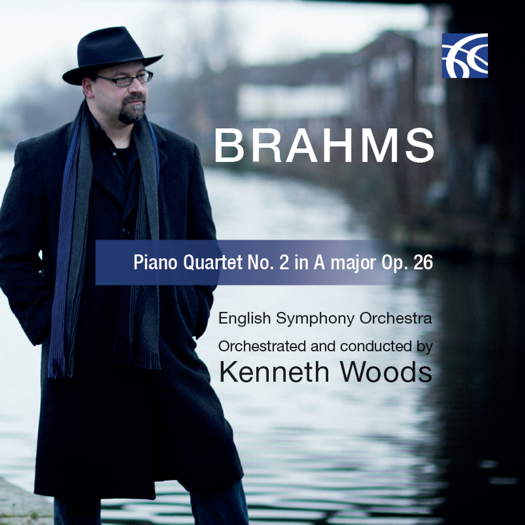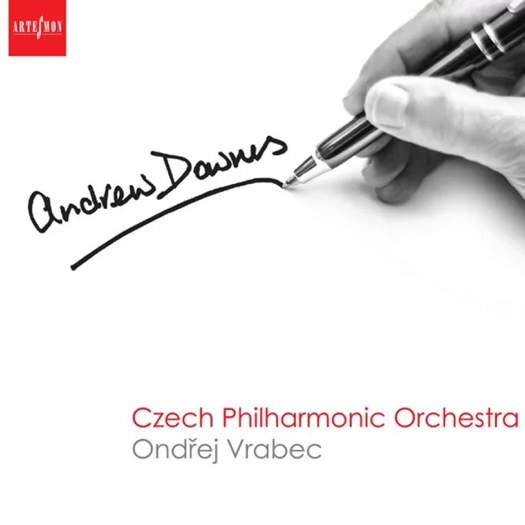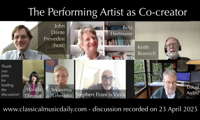 DISCUSSION: What is a work? John Dante Prevedini leads a discussion about The performing artist as co-creator, including contributions from Halida Dinova, Yekaterina Lebedeva, Béla Hartmann, David Arditti and Stephen Francis Vasta.
DISCUSSION: What is a work? John Dante Prevedini leads a discussion about The performing artist as co-creator, including contributions from Halida Dinova, Yekaterina Lebedeva, Béla Hartmann, David Arditti and Stephen Francis Vasta.
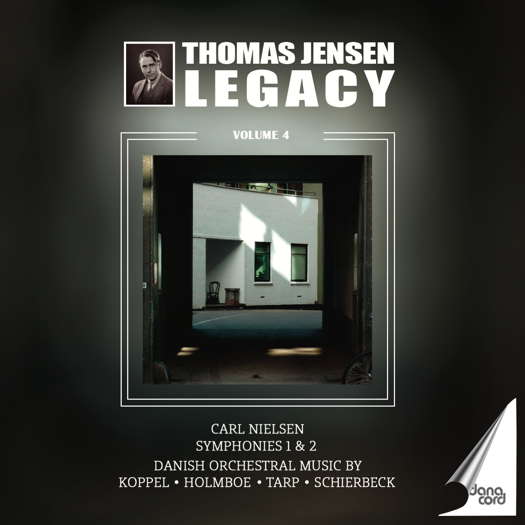
Sparkling Joy
GERALD FENECH listens to four volumes of Danacord's series of recordings by Danish conductor Thomas Jensen
'... all Jensen's interpretative genius is captured with electrifying vividness.'
Thomas Jensen, the most famous Danish conductor of the twentieth century, was born in Copenhagen on 25 October 1898 into a working class family. His first studies were at the Danish Conservatory of Music, after which he started conducting several Danish ensembles, including the Danish National Symphony Orchestra and the Aarhus Symphony Orchestra, then known as the Aarhus Civic Orchestra. In Aarhus he built the small orchestra up through broadcasts and tours within Denmark and later to Germany and Holland. He also conducted the Tivoli Concert Hall Orchestra. Jensen is best remembered as one of the pioneers of Carl Nielsen's music. He studied cello at the Royal Danish Academy of Music, where his harmony teacher was Nielsen himself. As an orchestral cellist he took part in the premieres of the master's 4th and 5th Symphonies, and also sat in on many of Nielsen's rehearsals. The latter's daughter held that Jensen was the conductor whose performances came closest to her father's own.
Jensen also played in the orchestra when Sibelius conducted his own music in Copehagen in 1924 and 1926. Jensen made his recording debut in 1937 with some light music by Knudage Riisager, and a year later led Svendsen's Romance, with Carlo Andersen playing the solo violin part. From 1937 to 1943 Jensen recorded over sixty sides of music for HMV Odeon and Tono. In Aarhus he recorded works by Kuhlau, Tarp, Elgar, Massenet, Debussy, Tchaikovsky and Smetana. His first Nielsen recordings date from 1941. Indeed, the Suite for String Orchestra on this album is precisely the piece that initiated this collaboration. An intimate version this, which brings out all of Nielsen’s delicate scoring for a small ensemble.
The following year Jensen recorded the Helios Overture and a crop of orchestral opera excerpts. Many of the conductor's classical pieces were inspired by such immortal names as Mozart and Beethoven. He received the vision for each piece through his many walks through nature and his travels around Europe, but he hated what he called horrible town experiences, where the chaos and industry of places like Slough in England completely stifled his imagination and enthusiasm. He died on 13 November 1963, aged just sixty-five, leaving behind a legacy of inestimable musical worth that is still under evaluation.
This Volume 4 in Danacord's exciting cycle dedicated to the recording legacy of Thomas Jensen is what you can call a mixed bag. The first CD focuses solely on the music of Carl Nielsen (1865-1931). Apart from the Suite for String Orchestra, one can also listen to the First and Second Symphonies in magisterial interpretations full of sweep and passion. These are studio recordings dating from 1952 and 1947 respectively, a period when Jensen was at the height of his powers.
Listen — Carl Nielsen: Allegro orgoglioso (Symphony No 1 in G minor)
(DACOCD 914 CD1 track 1, 0:01-0:57) ℗ 2021 Danacord Records :
The second disc groups together four composers, all Danish, from the generation that came after Nielsen's death: Herman Koppel (1908-1998), Vagn Holmboe (1909-1996), Svend Erik Tarp (1908-1994) and Poul Schierbeck (1888-1949). The most substantial piece from this quartet is Tarp's Second Symphony, which has strong influences of Prokofiev and the French Group Les Six, and contains music that is wholly accessible.
Listen — Svend Erik Tarp: Sereno (Symphony No 2)
(DACOCD 914 CD2 track 7, 0:00-0:53) ℗ 2021 Danacord Records :
Koppel's Fest-Overture, Op 33, dates from 1939, and despite its modern overtones there is much to enjoy, especially its rousing finale.
Holmboe's style of writing is that of a musical metamorphosis of thematic or motivic fragments, and the 1956 Epitaph is a prime example of this particular language.
Schierbeck is credited with four pieces: Largo, Op 33, for string orchestra, Paraphrase, Op 43, Natten, Op 41 (Symphonic Scene) and Haxa, Op 48 (Scene for Soprano, Organ and Orchestra).
The total playing duration of these four works is only twenty-five minutes, and the music has more than a strong affinity with Nielsen, but alternating moments of bouncy energy and lyrical pathos are not at a premium. These recordings were made between 1941 and 1962 and were taped from several live broadcasts and concerts. Only the Nielsen pieces are studio recordings. Notwithstanding their age, sound quality is more than acceptable, and all Jensen's interpretative genius is captured with electrifying vividness.
This is certainly a collector's item, especially for aficionados of Danish music. Otherwise, not only this disc, but the whole cycle, is a wonderful opportunity to discover and enjoy the art of, maybe, the greatest Scandinavian conductor of all time. Listen to disc 2 first, where one comes across a considerable number of some extremely rare pieces, but in Jensen's hands they are made to sound as fresh and exciting as they are innovative. Stirring historic stuff that must be heard.
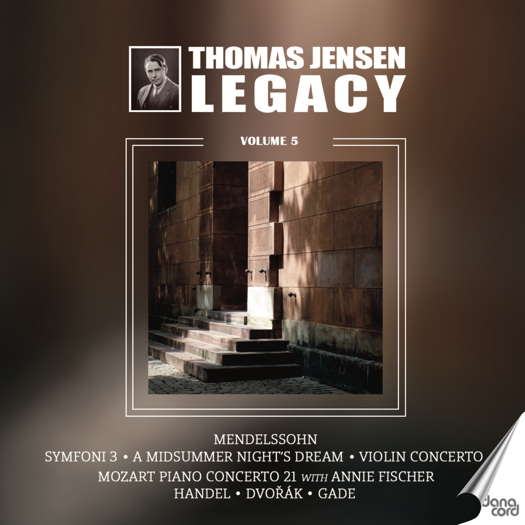
Through great efforts of singer Emil Holm and a group of fellow musicians, the Danish Radio Symphony Orchestra was founded in 1925 with just eleven players, under the wing of the famous Launy Grondahl. The ensemble soon grew to thirty players within a year, and in 1927 the first public concert took place. A year after, weekly concerts became the order of the day. In 1930, Holm recruited the renowned Russian conductor Nikolai Malko, and after going into exile from Germany in the 1930s, another big name, Fritz Busch, worked extensively as a major conductor in parallel with Malko. Up till then though, these conductors had no formal title. By 1948 the orchestra numbered ninety-two musicians. The first conductor to have the formal title of principal conductor was Herbert Blomstedt from 1967 to 1977. After an 'interregnum' of nine years, Lamberto Gardelli took over the role. The Italian was followed by Thomas Dausgaard, Yuri Temirkanov, Michael Schonwandt and Dmitri Kitaenko. At present Fabio Luisi occupies this position. Thomas Jensen (1898-1963) conducted the orchestra from 1957 to 1963, and his concerts have remained famous for the excitement generated in the concert hall.
Listen — Mendelssohn: Midsummer Night's Dream Overture
(DACOCD 915 CD1 track 1, 0:01-0:56) ℗ 2021 Danacord Records :
All the pieces on the fifth instalment are remasterings of live and previously unissued recordings of concerts Jensen gave in the last two years of his musical career, and they are a testament to his ardent love for music, especially that of his native Denmark and other Scandinavian countries. Mendelssohn's Midsummer Night's Dream Overture, Violin Concerto in E minor, Op 64, and the Third Symphony in A minor, 'The Scottish', are taken from a live broadcast at the Danish Radio Concert Hall on 21 January 1962, where Jensen demonstrates his undimmed power to galvanise and inspire both violinist Henrik Sachsenskjold and the DRSO to playing of exceptional 'bravura' towards the end of his life.
From the very last concert given two weeks before his death on 31 October 1963, Jensen and pianist Annie Fischer are on fluent and sparkling form in their interpretations of Handel's Concerto Grosso, Op 6 No 1 in G, HMV 319 and Mozart's Piano Concerto No 21 in C, K 467. Indeed, Jensen died on 13 November 1963, but the mesmerizing music making in this live broadcast does not give the slightest hint of what was to happen just thirteen days later.
Listen — Mozart: Allegro vivace assai (Piano Concerto No 21 in C)
(DACOCD 915 CD2 track 8, 2:17-3:16) ℗ 2021 Danacord Records :
Niels Gade's Four Novelettes in F, Op 53 and Dvořák's Carnival Overture, Op 92, which effectively launched the Danish Radio Symphony Orchestra on the international scene, are two very contrasting works, but in this live broadcast dated 5 June 1962, Jensen again displays his immense sensitivity to these scores that engage the listener from start to finish. Gade's serenity and Dvořák's fire, strangely enough, do sound, in Jensen's hands, as a truly neat couple, balanced and complimentary. A landmark album in the wider appreciation of a conductor whose legacy has been too narrowly restricted to the music of his homeland. A collector's item? Yes, but for the loads of positives therein this set is really worthy of serious investigation.
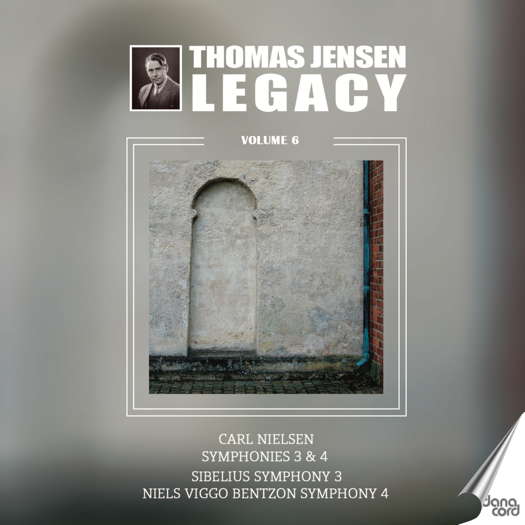
Volume six finds Jensen in familiar territory. Indeed, the programme is devoted to music by Carl Nielsen, Jean Sibelius and Niels Viggo Bentzon. Let's start with Carl Nielsen (1865-1931). In 1902 the composer signed a contract with the publisher Wilhelm Hansen which allowed him to go to Athens to join his wife Anne Marie, who was studying Greek art. Carl on his part, being a man of many interests, was interested in archaeology. The local conservatory placed a study room with a piano at his disposal, and here he could sit and compose. Nielsen's stay in Athens gave him the inspiration for a work depicting the sun rising and setting over the Aegean Sea, an overture which he called 'Helios'. Written between March and April 1903, the piece was premiered in Copenhagen on 8 October 1903 with Johan Svendsen conducting. The reception was mixed, but by time it has come to be considered one of Nielsen's most descriptive works. On the score Nielsen wrote, 'Silence and darkness. The sun rises with a joyous song of praise. It wanders its golden way and sinks quietly into the sea.' Indeed, the music describes all of this with marvellous imagery. Jensen's performance is taken from a studio recording dated September 1942.
Listen — Carl Nielsen: Helios Overture Op 17
(DACOCD 916 CD1 track 1, 3:35-4:35) ℗ 2021 Danacord Records :
The Third Symphony, 'Sinfonia Espansiva', was composed between 1910 and 1911, and at around thirty-five minutes in length, it is unique in Nielsen's output for having vocal parts, specifically wordless solos for soprano and baritone in the second movement 'Andante pastorale'. The premiere of the piece, along with the premiere of the composer's Violin Concerto, took place on 20 February 1912, and the symphony was soon being performed in many North European cities, such was its success. The subtitle 'Espansiva' does not give a clear indication of what Nielsen had in mind, but the work is unmistakeably optimistic, with the two outer movements full of animated moments, while the middle two compliment each other with sounds of serenity and vivacity. Maybe Robert Simpson's suggestion that it is the 'outward growth of the mind's scope' is the closest to an explanation why Nielsen dubbed the symphony 'Espansiva'. The recording is taken from a live broadcast on 20 June 1959.
The Fourth Symphony, 'The Inextinguishable', was composed during the First World War (1914-16), but Nielsen had been thinking about a new symphony for some time. Indeed, in May 1914 the composer wrote to his wife, 'I have an idea for a new composition which has no programme but will express what we understand by the spirit of life, that is: everything that moves, that wants to live - just life and motion, though varied - very varied - yet connected, and as if constantly on the move, in one big movement or stream. I must have a word or a short title to express this; that will be enough. I cannot explain what I want, but what I want is good.' When the work was ready he named his Fourth Symphony 'Inextinguishable', but this does not apply to the symphony itself, but rather to the elemental will to live, which is, after all, inextinguishable. The symphony's four movements are played without a break and the music is often fierce, dramatic, seething, although the middle movements do offer a momentary solace from the explosive energy that is unleashed in the first and especially in the last movement that features a legendary 'battle' between two sets of timpani. The Fourth remains Nielsen's most performed symphony, despite the interpretative problems it poses for both conductor and orchestra. This exhilarating recording was taken from a live broadcast on 2 September 1952.
Jean Sibelius (1865-1957) composed his Third Symphony in 1907. It is a turning point in the composer's symphonic output, as while his First and Second works in the genre are romantic and grandiose, the Third betrays the first indications of the austere and complex language that was to follow in his later symphonies. This Symphony is a good-natured, triumphal and deceptively simple-sounding piece, however, it shows a distinct, almost classical desire to contain the largest amount of musical material in the fewest possible melodic figures, harmonies and durations. This musical economy is most apparent in the first of the three movements, and echoes of Beethoven can be discerned in its clear and cleanly developed sections. Dedicated to Sir Granville Bantock, the symphony was premiered on 25 September 1907 under the baton of the composer. The piece was well received, but was not as successful as the first two symphonies, something that has remained up to this day. Sibelius's Third is here recorded from a Studio Broadcast of 31 May 1963.
Niels Viggo Bentzon (1919-2000) is one of Denmark's most respected composers of the twentieth century. From 1938 to 1942 he studied at the Royal Danish Academy of Music in Copenhagen and subsequently he taught at the Royal Academy of Music in Aarhus (1945-50) and at the Royal Danish Academy (1950-1988). As a pianist, he left many recordings of works by Beethoven, Busoni, Scriabin and others, but his fame mainly rests on the interpretations of his own works. Bentzon had also a rare gift for improvisation, and when inspired, could improvise in a single evening a complete piano sonata. These qualities inscribe him in the great classical tradition of the composer/interpreter/improvisor. A colourful personality and a cultural phenomenon, he became famous in Denmark for his frequent appearances in the media. He was sometimes tagged with the reputation of being an eccentric, but he was a giant in his field, literally and figuratively. Still, despite this celebrity, he often suffered from severe depression and had to be treated in psychiatric institutions with regularity. Bentzon was a prodigious composer and his oeuvre numbers well over six hundred works, with a third dedicated solely to the piano. Keyboard pieces apart, he also wrote twenty-four symphonies, sixteen string quartets and a considerable number of operas, ballets and concertos for several instruments. Bentzon's style can be described as 'neoclassical', and many of the works he wrote before the 1950s are influenced by composers such as Brahms, Hindemith, Bartók, Nielsen, Britten, Berg and Stravinsky.
In the fifties, the composer used the metamorphosis technique, and later resorted to dodecaphonic works. The Fourth Symphony is written very much in the former style. Indeed, it is dubbed 'Metamorphosis'.
Mutations leans more towards the dodecaphonic language, but whatever the case, Bentzon's music is easily recognisable and characterised by great expressivity, strong contrasts and striking themes.
Listen — Niels Viggo Bentzon: Mutations
(DACOCD 916 CD2 track 4, 1:17-2:17) ℗ 2021 Danacord Records :
Mutations, Op 123 (1960) and Symphony No 4, Op 55 (1948) are both recorded from live broadcasts in 1960 and 1961 respectively. This compilation spans a period of twenty-one years (1942-1963), but Jensen's searing passion for these works did not diminish by the years. Indeed, these thrilling performances find the maestro in scintillating form, giving incisive interpretations perfectly suited to the ingenious innovation of these masterpieces of Danish and Finnish modernism. Never mind the variable sound quality which, in the circumstances, is unavoidable. Just wallow in the shimmering beauty of this music-making.
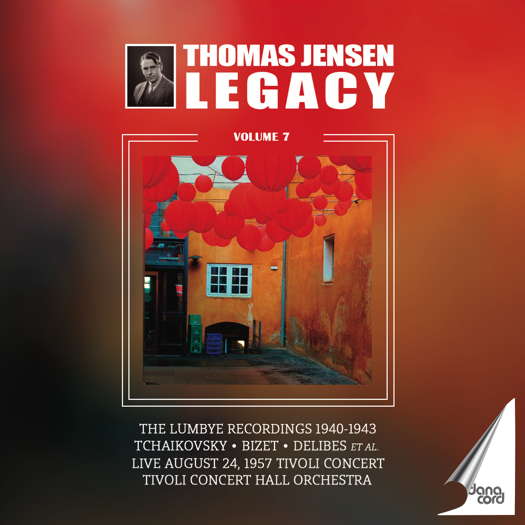
Hans Christian Lumbye, maybe Denmark's most loved composer and director of the nineteenth century, was born on 2 May 1810 in Copenhagen. During one of several boat trips with his family for his father's military transfers, Hans Christian became sick, which probably caused his deafness in later years. Lumbye learned to play the violin and trumpet, had music theory lessons and early on began to write songs and marches. At the age of fourteen, he became a military musician and in 1829 he asked to be transferred to Copenhagen. When he was off duty, he played dance music. He also worked as a composer, wrote a lot of dances and became a popular director for Copenhagen's upper class.
What really changed his career was when Lumbye first heard the music of Joseph Lanner and Johann Strauss Snr and soon started writing in a similar style. People started to call him the 'Strauss of the North', an accolade that still holds to this day. Audiences loved his style, and this was one reason Lumbye's concerts in Tivoli amusement park were so well attended and so very successful. The composer had been involved from the beginning, when the park opened in 1843. He and his orchestra performed there from spring to autumn. In winter, when the Tivoli was closed, Lumbye's orchestra played in Copenhagen's theatres and at festivities of the elite class or they toured through Denmark and abroad.
Lumbye wrote more than seven hundred pieces and is one of the few Danish composers whose music is performed in other countries. He was quick and up to date. He composed music for extraordinary events in the Danish capital and in compliment to the Royal Family or other prominent persons. Almost a hundred of his melodies are named after women. In 1872, Lumbye had to quit his work as director and conductor because he was weakened and deaf. In May 1873 he conducted his famous Champagne Galop for the last time - seated. He died on 20 March 1874, forty-three days short of his sixty-fourth birthday, leaving for posterity a goldmine of never-ending beauty. Why this brief biography of Hans Christian Lumbye, you may ask? Well, because this seventh and last volume of Danacord's cycle, dedicated to the conducting art of Thomas Jensen, has as its protagonist precisely H C Lumbye. Indeed, this two CD-set is a recreation of those magical evenings at the Tivoli Gardens, and this compilation features live and studio recordings of some of Lumbye's most endearing tunes plus a host of other dances and marches by a substantial number of other composers.
The first CD is dedicated almost exclusively to Lumbye's pieces and includes a number of waltzes and polkas for which he was so famous. Several studio recordings from the 1940s (1940-43) receive their first release.
Listen — Hans Christian Lumbye: Champagne Galop
(DACOCD 917 CD1 track 13, 0:55-1:27) ℗ 2021 Danacord Records :
The second CD features a previously unpublished live concert broadcast (24 August 1957) direct from the Tivoli Gardens which includes music by Schubert, Rubinstein, Tchaikovsky, Ponchielli, J Strauss Snr, Saint-Saëns, Lacombe, Elgar, Delibes, Bizet, Horneman and Sibelius.
Listen — Carl Frederik Emil Horneman: Aladdin Overture
(DACOCD 917 CD2 track 13, 6:57-7:51) ℗ 2021 Danacord Records :
Weber and Brahms accompany Lumbye on the first CD.
Jensen conducts the Tivoli Orchestra not only with a sparkling joy but also with the same authority he brought to his classic recordings of Nielsen and Sibelius. A glittering array of march and dance tunes vibrantly conducted and performed. So what are you waiting for? Come on, get up and join the fun.
Copyright © 7 February 2022
Gerald Fenech,
Gzira, Malta

CD INFORMATION: THOMAS JENSEN LEGACY VOLUME 4
CD INFORMATION: THOMAS JENSEN LEGACY VOLUME 5
CD INFORMATION: THOMAS JENSEN LEGACY VOLUME 6
CD INFORMATION: THOMAS JENSEN LEGACY VOLUME 7
CLASSICAL MUSIC ARTICLES ABOUT DENMARK


